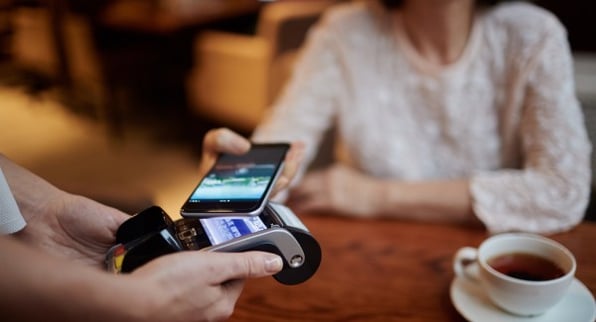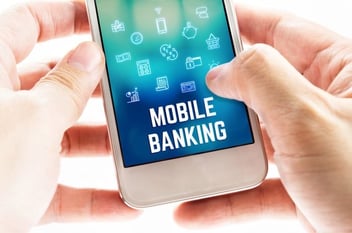Mobile Banking and the Tipping Point for Mobile Payments
There are amazing things happening in the world of science and technology right now. Mind blowing things.
Water on Mars, and hi-def photos of Pluto.
Cars that traverse 300+ miles on a single battery charge. Cars that drive themselves!
There’s even a robot that will play college drinking games with you!
It seems like every day society is getting closer to something like The Jetsons. Or maybe we’re already better off.
I mean, it’s not like Rosie the Robotic Maid ever played beer pong with George.
All of this, and yet we’re still struggling to pay with our mobile phones. While other industries are jumping ahead by leaps and bounds, mobile wallets are still learning to walk.
But the path to widespread adoption is here.
In fact, the odds are good that at least half of you reading this have already started down that path, based on apps you’re already using.
Mobile Banking is the Gateway
Financial institutions are in the best position to take the reins of mobile payments because consumers already look to them when they reach for their credit cards, and they know their bank or credit union offers fraud protection. That familiarity has been earned over years of traditional payments and transactions.
Yet most financial institutions have been slow to jump on the bandwagon. To a large extent, it feels as if they're willing to cede the mobile payments world to Silicon Valley and Apple or Google.
The FIs are onto something now, however, with the growth of mobile banking platforms. Many banks have heard the call to build customer engagement by adding value. It’s why you see innovations such as the Zions AmaZing Deals app and the Cachet Prepaid app, both of which feature merchant funded offers. The Capital One app allows P2P payments by “bumping” phones, and the City Bank Texas app can temporarily deactivate debit cards at the user’s command.
These FIs discovered that people like it when their apps allow for more than just basic banking functions and check scanning. They give people a reason to open the app and engage with the brand, even when they’re not checking their balance.
A new study from TSYS indicates mobile banking app usage is growing rapidly, with 50% of respondents saying they had installed their bank’s mobile app. 70% of that group had used the app multiple times in the previous month.
This growing usage - and the creation of mobile commerce - is the gateway to mobile payments.
More than Just Another Place to Bank
Habituating people to mobile banking apps is a major advantage for banks that other mobile payments players don’t enjoy.
The other big advantage FIs have is transactional data, and being able to serve content and value to users based on their previous purchases. To date this model, in its card-linked offers form, has been hit and miss, but integrating those offers seamlessly into the mobile payment ecosystem might be the trick.
The key is adding relevant value that goes beyond basic banking functions. The same is true for mobile payments themselves, whether that payment function lives within the banking app or elsewhere.
People need more than just another place to check their accounts, just like they need more than just another way to pay.
Nearing a Tipping Point?
As we’ve pointed out before, amazing technology doesn’t just show up overnight. Smartphones feel like they took over the world overnight, but they were the result of 25+ years of learning, for example.
The introduction of the smartphone itself wasn’t enough to mobilize the masses. That tipping point came when Apple introduced the App Store, which allowed third parties to add incredible value through unique applications and experiences.
Mobile wallets are waiting for that same tipping point. It’ll come when they focus on value, and not just being another way to pay. It’ll be in the form of loyalty programs, mobile coupons, in-store beacon technology, data-backed marketing, and other forms of commerce native to the smartphone experience.
Mobile banking, and the structure of a mobile commerce network is the first step, and those apps are now building out commerce functions. Mobile payments should be close behind.
(Photo courtesy of Hernán Piñera)
Topics: Customer Engagement
Written by: Brandon Carter






.jpeg)





.png?width=352&name=bill_pay-(1).png)

Share your Comment.